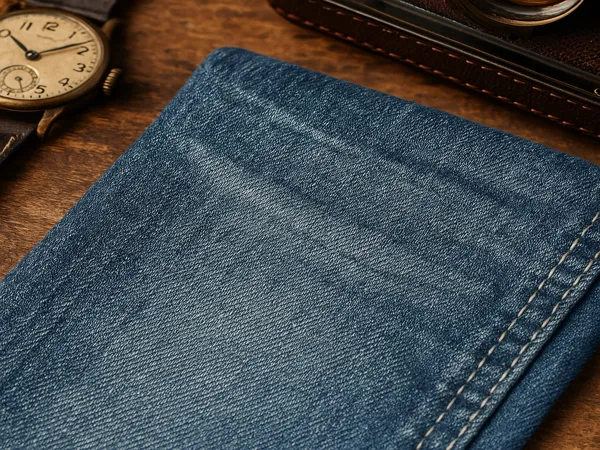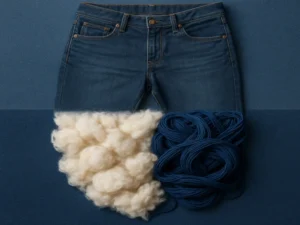مقدمة
Slub denim has gained growing popularity in the fashion world thanks to its uneven texture, organic feel, and rich visual character. Unlike flat, mass-produced denim fabrics, slub denim brings life to garments with its irregularities and natural variation.
This article will cover the following key points:
- 1. The definition and characteristics of slub denim
- 2. How slub denim is made through yarn and weaving techniques
- 3. Types of slub texture patterns and their visual effects
- 4. The appeal of slub denim in fashion and design
- 5. Functional pros and cons of slub denim fabrics
- 6. How to evaluate slub denim quality
- 7. Real-World Examples: Exploring Slub Denim Styles by Texture
- 8. Tips for sourcing and customizing slub denim from suppliers
1. What Is Slub Denim? Understanding Its Unique Fabric Texture
Slub denim is a type of denim fabric woven with slub yarns—yarns that are intentionally spun with irregular thicknesses. This technique creates highs and lows on the denim surface, producing a distinctive, non-uniform texture that adds visual depth and character. Unlike smooth or flat denim, slub denim captures a more organic and artisanal feel, often associated with vintage or handcrafted styles.
2. How Slub Denim Is Made: Yarn Spinning and Weaving Techniques
The slub effect in denim begins at the spinning stage. By adjusting spinning speed or tension, yarns are produced with alternating thick and thin segments. These are then woven—usually as warp yarns, weft yarns, or both—to form the final fabric. Mills can control the frequency, length, and intensity of the slub pattern to create different styles, such as “short slub,” “long slub,” “random slub,” or “multi-slub.” This engineering process allows a high degree of creativity in denim design.
3. Slub Patterns and Visual Styles: How Texture Affects Denim Aesthetics
Different types of slub patterns dramatically affect the fabric’s look. For example:
– Vertical slubs from slubbed warp yarns create long, streaky effects
– Crosshatch textures appear when both warp and weft yarns are slubbed
– Rain-like or flame effects come from irregular yarn placement
These patterns become especially visible during washing, fading, or distressing, making each pair of jeans unique. Designers can choose bold or subtle slub patterns depending on the intended product style.
4. Slub Denim in Fashion: Style Appeal and Design Applications
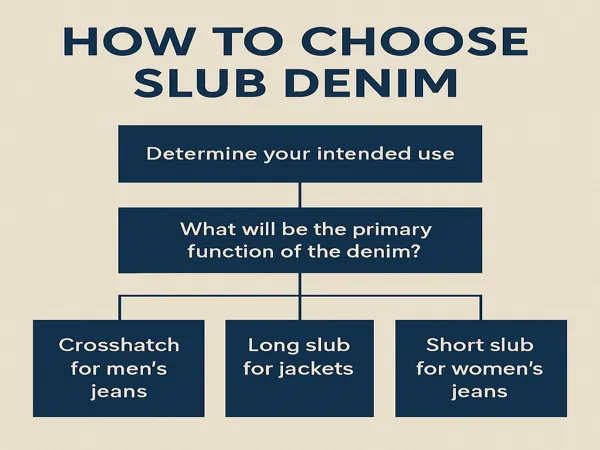
Slub denim is favored by designers for its ability to add personality to garments. Its irregular texture captures light and shadows, enhancing the visual depth of jackets, jeans, and shirts. In raw denim, slub yarns create high-contrast fading as thicker yarn sections hold more dye. In washed denim, the textured highs and lows show beautiful wear patterns. Slub denim aligns with trends like “vintage revival,” “wabi-sabi aesthetics,” and “individual expression”—making it a staple in both premium and streetwear fashion.
5. Functional Pros and Cons of Slub Denim Fabric
While slub denim shines in aesthetics, it also has notable functional aspects:
Pros:
– Adds strength and structure when tightly woven
– Breathable and comfortable due to yarn variation
– Ages beautifully with distinctive fade lines
Cons:
– Slub thickness can make sewing slightly more complex
– Surface irregularity may not suit formal or smooth-finish garments
Thus, slub denim works best in casualwear, artisanal designs, and character-driven collections.
6. How to Identify High-Quality Slub Denim
When evaluating slub denim quality, consider the following:
– Controlled irregularity: The slub pattern should look natural but not chaotic
– Fabric density: Good denim maintains strength despite yarn variation
– Dye penetration: Quality slub yarns hold indigo well, especially in thicker sections
– Feel and drape: Should balance texture with comfort—firm but not stiff
These signs indicate professional yarn engineering and careful weaving.
7. Real-World Examples: Exploring Slub Denim Styles by Texture
Slub denim takes many visual forms depending on the yarn configuration and weaving method. For example, crosshatch slub is achieved by applying slub yarns in both the warp and weft directions, producing a grid-like or ‘X’ texture that becomes highly visible in wash treatments.
Vertical slub, on the other hand, results from using slub yarns only in the warp direction. This creates a linear, streaky appearance and is widely used for cleaner yet character-rich styles. It enhances vertical fade lines and pairs well with both classic and modern denim silhouettes.
- Below are real examples of ZEVA DENIM’s slub denim offerings:
Example of Crosshatch Slub Denim – clear ‘+’ texture under light fade
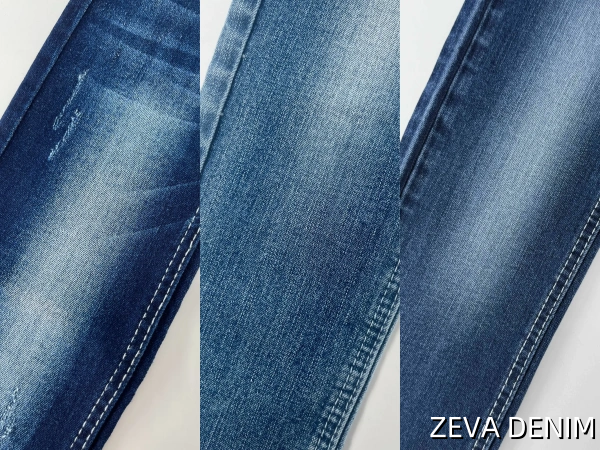
Vertical Slub – clean lines with mid-wash fade
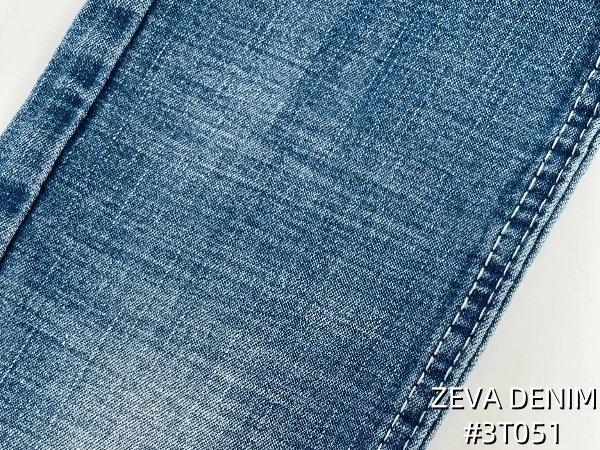
8. Sourcing Slub Denim: What Brands Should Consider
When sourcing slub denim, brands should clarify their desired texture, yarn count, indigo shade, and fabric weight. Because slub effects are customizable, collaboration with a capable supplier is essential.
ZEVA DENIM, a professional denim fabric manufacturer based in China, offers slub denim among their 200+ fabric styles. With in-house R&D, quick sampling, small MOQs, and mostly 7-day delivery, they support both high-volume and boutique fashion clients. Their slub denim options include both classic and innovative textures—ideal for brands seeking uniqueness and fast turnaround. (More info at: https://www.zevadenim.com/)
Conclusion: Why Slub Denim Matters in Modern Fashion
Slub denim adds dimension, character, and originality to garments. Whether bold or subtle, its handcrafted appearance makes each piece feel personal. As consumers seek individuality and brands aim to differentiate collections, slub denim offers a creative and authentic path. By choosing the right texture, weight, and supplier, designers can elevate their product lines with fabric that tells a story—even before the jeans are worn.

